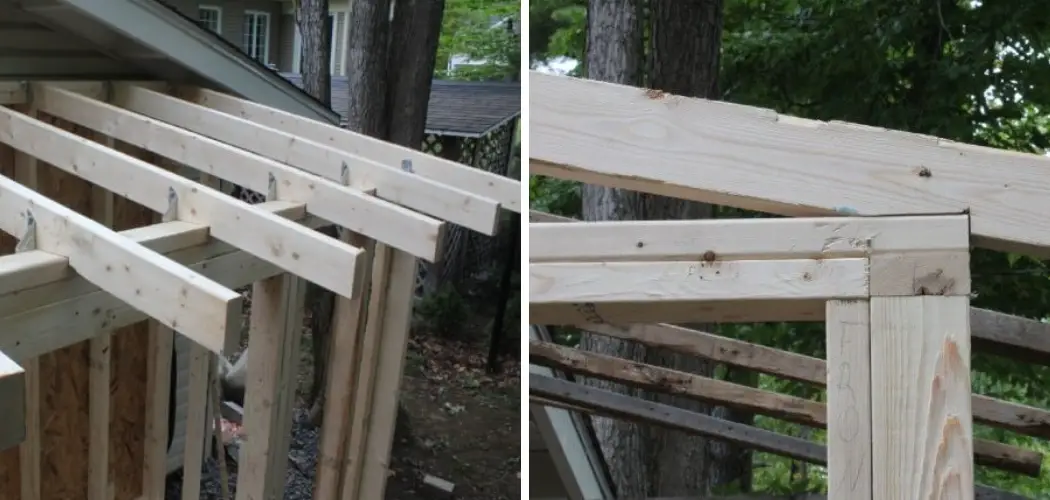Are you in the middle of a home improvement project where you need to add some structural support? Attaching rafters is an important part of many building and remodeling projects, but it can be daunting for those who have never done it before. However, if you take your time and pay attention to detail, attaching rafters can be easier than expected!
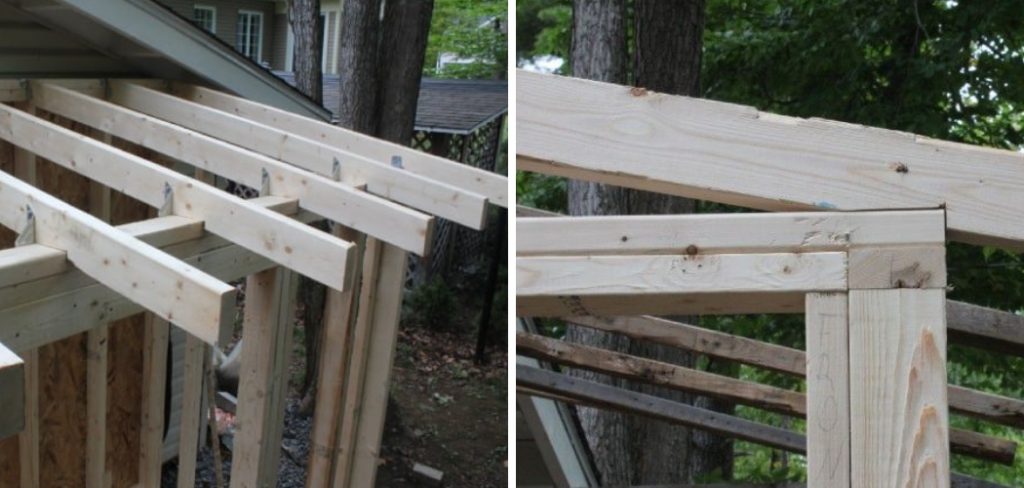
It is important to know how to attach rafters. In this blog post, we’ll look at what materials are needed for attaching rafters, as well as the different methods used when doing this task. With some patience and practice, you’ll soon feel much more confident about adding desired structural support by properly fitting rafter beams in your construction.
Let’s get started learning how to expertly attach rafters!
Tools You Will Need
- Hammer
- Nails
- Screws
- Level
- Circular Saw
- Line Level or Laser Level
8 Steps Guide on How to Attach Rafters
1. Calculate the Rise
If you want to complete a home carpentry project, such as creating a roof, it is essential to accurately calculate the rise and run of your rafters beforehand. The length and angle of each rafter can be determined through simple arithmetic. To do this, first, measure the span or horizontal distance between where the rafters will rest.
Measure the height at which they must reach above that point. With these two pieces of information, you can use a triangle formula or online calculator to determine the rafter length and its desired angle. This data then needs to be taken into consideration when cutting each piece so that your roof has a structurally sound support system.
2. Cut Your Rafter Beams
To ensure a perfect fit when installing rafter beams, it is essential to cut them to the right size using either a circular saw or a hand saw. Pay special attention when cutting to make sure that the ends are square and even.
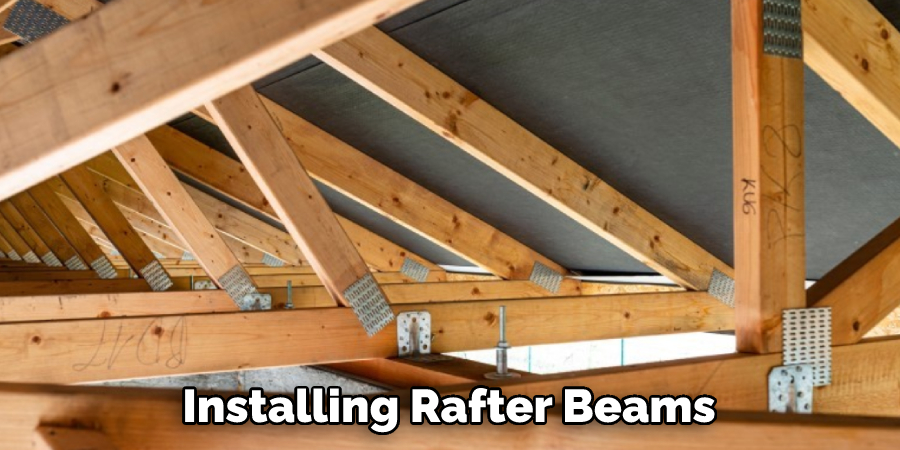
As this will guarantee they fit seamlessly without having to do additional work. Cutting the beams precisely with these tools will ensure that the entire installation process goes quickly and smoothly.
3. Place the Upper End
Before completing the installation of the rafter, it is important to ensure that it is correctly positioned. To do so, you should cut the rafter and then hold the upper end of it against the top plate of your structure. Making sure it is level, you can drive two nails into the plate and secure it in place.
For safety, additionally, add metal plates and screws across the length of your rafter before use. With these simple steps, you will be able to guarantee that your newly installed rafter offers maximum stability for your structure!
4. Secure the Upper End
Securing the upper end of your rafters can be a crucial step in preventing any structural issues with your roof. It is important to use the right tools for the job, so make sure you opt for one or two galvanized nails on each side. Unlike other metal nails, galvanized nails are less prone to rust over time and will help ensure long-term stability for your rafters.
Additionally, you should pay special attention when hammering them in, making sure that no material is left sticking out that could lead to potential roof leaks. By ensuring that you secure the upper ends of your rafters correctly, you can help protect your roof for years to come.
5. Mark the Location
Finding the correct location to cut a birdsmouth notch can be difficult. To make sure the beam is properly aligned with the wall, start by finding the lower end of your rafter and precisely marking the location. Once you have found where to make your cuts, carefully carve out a triangular-shaped notch on the underside of the beam.
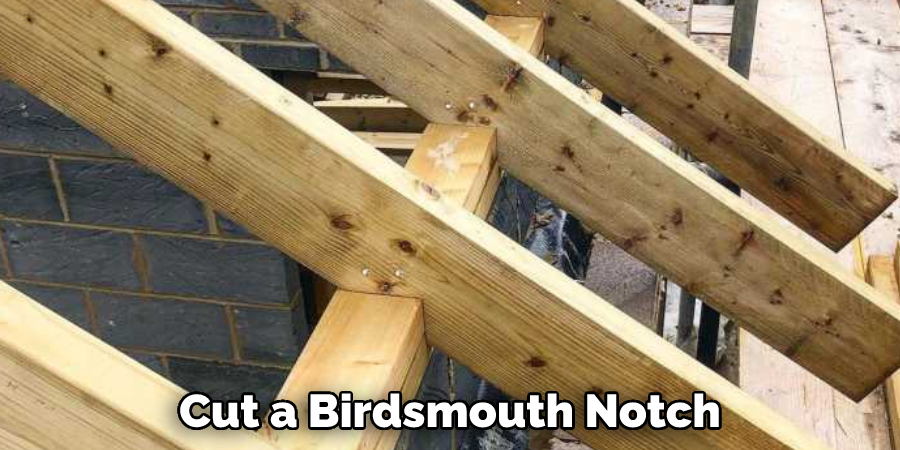
This will allow the notch to fit snugly against the top plate, creating a strong connection point without compromising stability or security. By following this process and taking care when making your cuts, you can ensure that your beam fits perfectly.
6. Place the Lower End
Before any building project can begin, the first step is to secure the rafters into place. You must make sure you mark out exactly where each one should be placed before attaching it.
To do this, take the lower end of your rafter and carefully slide it into its marked location, using screws or nails to hold it firmly in place. Taking the time to get this step right will ensure that any subsequent work done on the rafter is properly supported and can stand up to weight effectively.
7. Check for Any Discrepancies
Installing rafters can be a challenging task, especially if you’re doing it alone or don’t have experience. To make sure that your rafters are level, you’ll need to use a line level or laser level to check for any discrepancies between them. Doing so will not only enable you to achieve accuracy in installation.
But you will also save time and money that may have been wasted on potentially faulty rafter installations. Thus, before getting started check your supplies and make sure you have the correct tools such as a line level or laser level to help get the job done right the first time.
8. Secure Them With Nails
Securing the rafters is an important step in constructing a roof framing. It is essential to use nails that are corrosion-resistant and properly sized, so they can adequately hold the rafters in place.
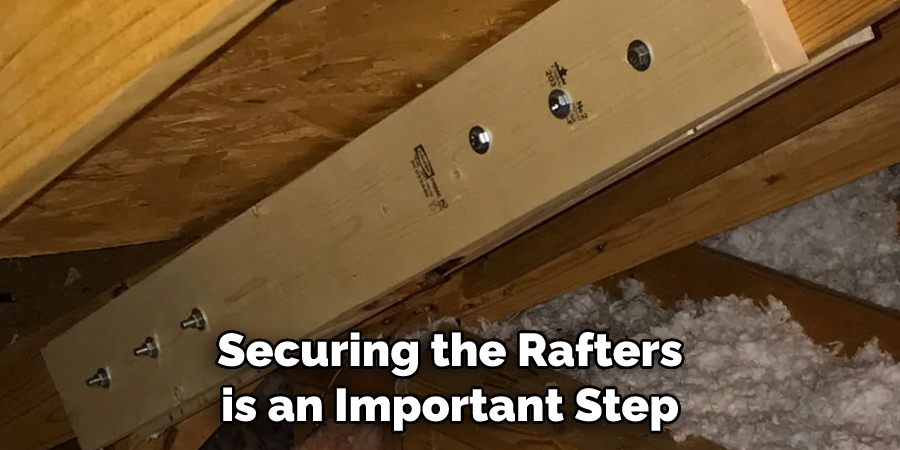
To ensure that each rafter is properly secured, nails should be driven at least every 16 inches along its length. This way, the rafters do not slip off the ridge board due to strong winds or heavy snowfall, extending the lifetime of your roof framing and ultimately protecting your home for years to come.
Following these steps will help you properly attach rafters to your project and provide added structural support. Remember that safety always comes first when working on any home improvement project, so make sure to wear protective gear and follow all instructions carefully. Once you feel comfortable with the process, you can easily add rafters to any structure you need!
If you have additional questions or would like more information on how to attach rafters, feel free to contact our experts at your local hardware store. We’re here to help and ensure that your project comes out looking great!
9 Tips for Attaching Rafters
- Choose the right size rafters.
- Cut the rafters to the correct length.
- Notch the ends of the rafters.
- Attach the rafters to the top plate.
- Secure the rafters to the plate with nails or screws.
- Install blocking between the rafters.
- Install collar ties or ridge boards between the rafters.
- Install roof sheathing on top of the rafters.
- Install roofing material on top of the sheathing.
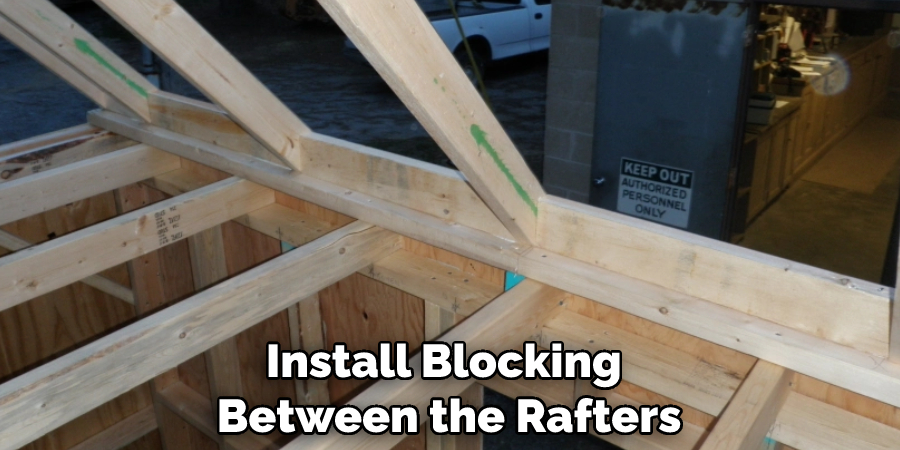
Frequently Asked Questions
How to Cut Rafters?
Cutting rafters is a task that requires patience and accuracy; it’s one of the most important parts of any roofing structure. You should begin by measuring the length of your rafter according to your plans, then mark the measurements on a piece of lumber with a carpenter’s square.
Before cutting, double-check all the measurements for accuracy. To cut the rafter, use a circular saw or handsaw, and be sure to clamp it securely if you’re using a handsaw to ensure safety and accuracy. Then, carefully follow along your marked lines and saw away from them to prevent splintering.
Lastly, use sandpaper to make sure that there are smooth edges without rough patches. Taking these steps into consideration before you start cutting will help make sure you’re left with strong and durable rafters.
How to Notch Rafters?
Building rafters can be a daunting task, but the process of notching them is quite simple. To ensure that you make a safe and secure connection, you should begin by verifying the pitch of your roof.
Next, mark off the seat cut and ridge cut on each end of the rafter, making sure to cut away the extra material at an angle corresponding to your pitch. From there, make a template from paper to trace over each notch so you know where to make your cuts.
Finally, saw into the rafter using either a handsaw or back saw then chisel to refine your notch before adding wood glue for support. Following these easy steps will help ensure you create a well-crafted rafter system that will withstand even the harshest weather conditions.
How to Secure the Rafters with Nails?
Securing your rafters with nails isn’t as hard as it may seem. To start, wear safety glasses, long-sleeved shirts, and gloves to protect yourself from any splinters or sawdust. Next, measure the rafter and mark a spot where the nail will go to secure it in place.
Make sure to keep all future measurements consistent for each rafter. When you are ready to drive the nail in, hold the head of the nail with a nail set or claw of a hammer. You should carefully strike the set with a hammer until it is flush with the surface.
With this method, you can easily secure your rafters in place while ensuring they remain firmly attached.
Conclusion
While attaching rafters might seem like a daunting task. It’s not that difficult – especially when you know what steps to follow. You should carefully determine how to attach rafters.
Attaching rafters is a tricky but essential part of building a roof. By following the tips outlined in this post, you’ll be able to attach your rafters with ease. So what are you waiting for? Get out there and start building!
You Can Check It Out to Decorate an Old Wooden Sled for Christmas

